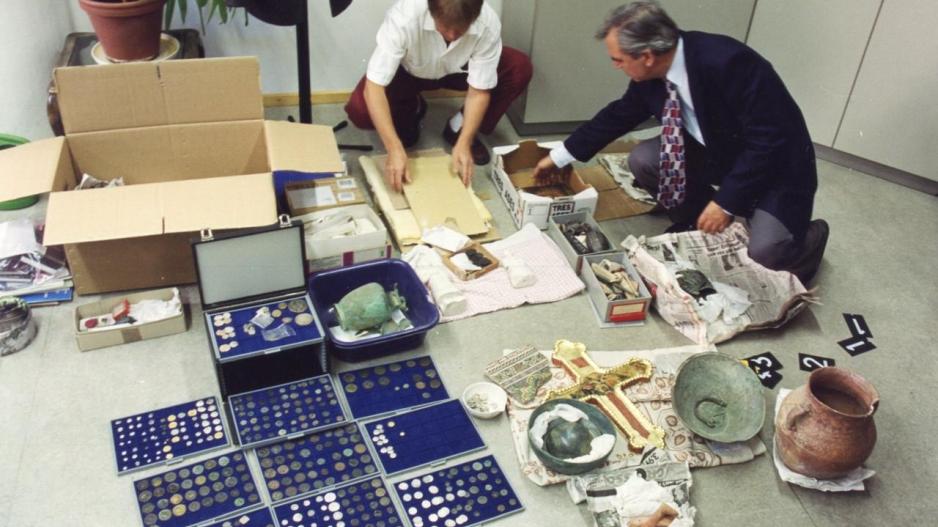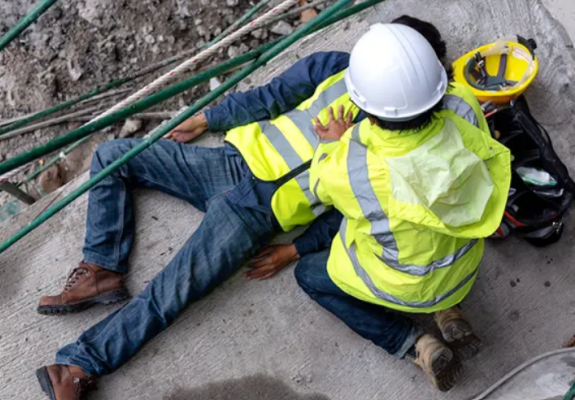Cyprus’ Cultural Heritage Is Not For Sale
Paul Lambis Reached out to Renowned Cultural Activist Tasoula Hadjitofi and Asked About Her Thoughts on the Church’s Recent Declaration and the Financial Transaction Behind the Stolen Antiquities' Repatriation
For centuries, ancient artefacts, art, and relics have been a topic of ownership, provenance, and morality debates. But what is the current situation for those who have intentionally purchased stolen artworks to repatriate them, and what message does this give to the world, particularly those who have dedicated their lives to fighting for art justice? Should there be a financial condition on repatriating a country's stolen heritage?
On Tuesday, June 11, Cyprus' Synodal Committee issued a press release announcing that an agreement had been reached between Cypriot and German authorities for the repatriation of sixty ecclesiastical and prehistoric artefacts looted after the Turkish invasion of the island in 1974.
Although the Church of Cyprus hailed the day as historic and joyful, marking the culmination of nearly three decades of efforts and legal battles, undisclosed sources have revealed the repatriation transaction involved Cyprus – and, in this case, His Eminence Porphyrios of Neapolis, Head of the Church of Cyprus Representation to the European Union – paying a sum of money to German authorities to reclaim Cyprus' stolen antiquities.
I reached out to renowned Greek Cypriot cultural activist and author of the best-selling memoir, The Icon Hunter, and asked about her thoughts on the Church’s recent declaration and the financial transaction behind their repatriation.
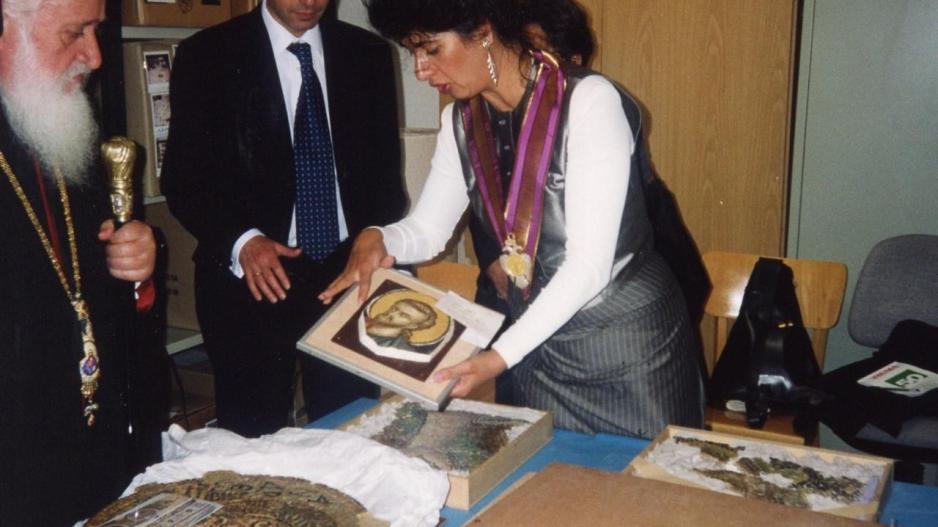
“There is something intuitively wrong – and foreign to the spirit of our times – about the idea of people in Cyprus being asked to pay for the repatriation of parts of their cultural and spiritual heritage, which were stolen in horrible circumstances,” Tasoula Hadjitofi said.
"Many important Cypriot treasures remain in Germany, and people in Cyprus have a profoundly legitimate desire to see them all returned."
Hadjitofi is knowledgeable of the legal intricacies surrounding stolen artworks, as well as the time-consuming quest for art justice and repatriation, having spent most of her life combatting art trafficking. As an authorised representative of the ancient Church of Cyprus, former Honorary Consul of Cyprus in the Netherlands, and founder of Walk of Truth, a Dutch-based non-governmental organisation that combats cultural crime, Tasoula Hadjitofi followed procedure in January 2024 by requesting that German authorities facilitate the return of all the island's religious cultural artefacts in a detailed letter addressed to Germany's Federal Minister of Foreign Affairs, Annalena Baerbock.
In her letter, Hadjitofi recounted the Turkish invasion of Cyprus in 1974, the coordinated effort to steal Cyprus' cultural heritage, and her own participation in coordinating the 1997 'Munich Case', one of the largest art trafficking sting operations in European history. Tasoula also copied on her letter the President of the Republic of Cyprus, Nikos Christodoulides, the Archbishop of the Autocephalous Church of Cyprus, Georgios, and the German Ambassador to the Republic of Cyprus, Anke Schlimm.
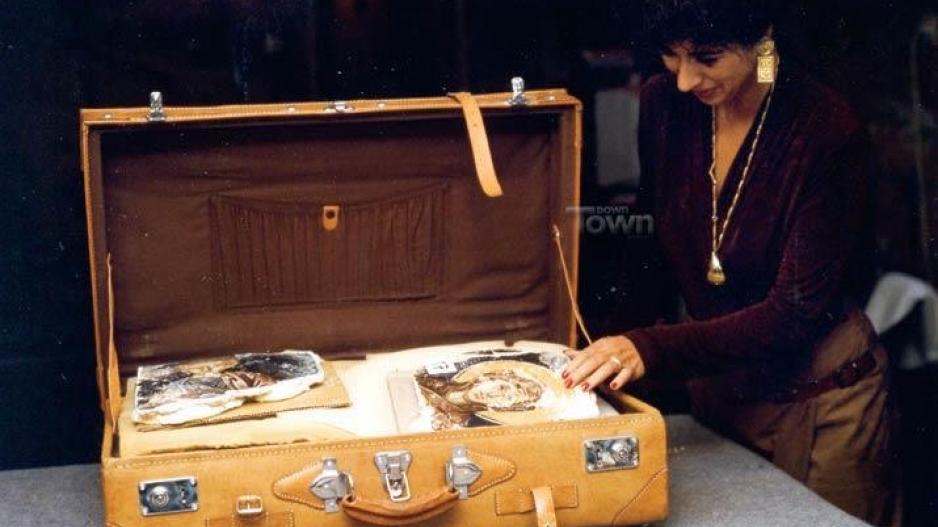
Despite Hadjitofi's continuous efforts and adherence to procedures, Bishop Porphyrios of Neapolis went ahead on his own accord and paid the German authorities for the restitution of Cyprus' stolen treasures. In addition to the money given by the Church, it has been reported that Cyprus' Department of Antiquities also contributed financially to the repatriation 'deal'. "Cyprus’ cultural heritage is not for sale. Paying for art repatriation is wrong and goes against ethical practices," Hadjitofi said. "Moreover, should not one European neighbour to the next support justice rather than taking advantage of one nation's vulnerability," she added.
To acquire a better understanding of the broader context of how Cyprus' stolen antiquities ended up in Germany, and what led to Tasoula's involvement in combating art trafficking, as well as the life risks she encountered along the way, we need to go back fifty years. Tasoula, like many other Cypriots at the time, was forced to flee her home to escape the 1974 Turkish military invasion of Cyprus, eventually settling in a foreign country as a refugee.
In the immediate aftermath of the invasion, an organised operation was launched to steal icons, frescoes, and mosaics from Cyprus' centuries-old churches and religious sites, including some of the world's oldest and most magnificent samples of Christian art. Electric drills were employed on the walls of ancient churches to extract religious art that had served as a source of inspiration and hope for Cyprus' faithful populace, which was then sold internationally. “The theft of these treasures was part of a horrific campaign of looting and plunder at the expense of people who were already suffering the dire consequences of the war,” she added.
In the late nineties, Hadjitofi coordinated "The Munich Case," one of the most extensive art trafficking sting operations in European history since World War II. During her intensive work, having worked closely with Archbishop Chrysostomos I of the Orthodox Church of Cyprus, as well as Dutch art dealers, Canadian sellers, and German detectives and police, Tasoula was at times compelled to play ‘cat and mouse’. She was targeted by art traffickers; fearing for her own and her family's safety, she was forced to pay for private security.
After a joint police operation by the German and Cypriot authorities in 1997 – an action which remains unique in the story of international efforts to combat cultural crime – over 5,000 artefacts were discovered hidden in the double ceilings and hollow floors of the Munich apartments of the late Aydin Dikmen, a Turkish dealer known as "The Archaeologist."
“People in Cyprus were relieved when they learned that at least 350 of the 5,000 or so artefacts in Dikmen's hoard were antiquities stolen from the island. They were subsequently disappointed as I hope you can understand, when those products remained in Germany for a long time.”
According to Hadjitofi, 173 stolen artefacts from Cyprus were returned to the island in 2013 following a lengthy legal struggle. However, many significant Cypriot relics from Dikmen remain in Germany, "and people in Cyprus have a profoundly legitimate desire to see their cultural heritage returned."
The German tax authorities have filed a claim against Dikmen's estate alleging that he failed to declare his profits from the sale of certain illegally trafficked cultural property while he was alive, thus preventing their repatriation. It was suggested that the Cypriot authorities settle this claim before repatriating the remaining objects. “The taxes Dikmen owed were for the sale of Cypriot mosaics that had been ripped out of churches before he trafficked them abroad,” Hadjitofi stated.
But the laws of buying stolen products are simple. When a thief sells a stolen artefact, the general rule is that whoever buys the item, regardless of the purchase price or the terms of the sale, does not obtain legal possession (good 'title') to it. This is because the thief never had a 'title' – and you cannot sell something you do not have. The original owner can take action to require the purchaser to return the artefact (or any damages to its value) to them.
Across the Western world, a new consensus emerged in support of the restitution of artefacts acquired illegally or immorally. Interestingly, Germany has been a leader in this effort, evidenced by the return of 20 Benin Bronzes in 2022, which were removed during an inhumane British colonial attack on Nigeria in 1897. Furthermore, it was even acknowledged that all the Benin Bronzes, which are currently displayed in German collections, belong to Nigeria.
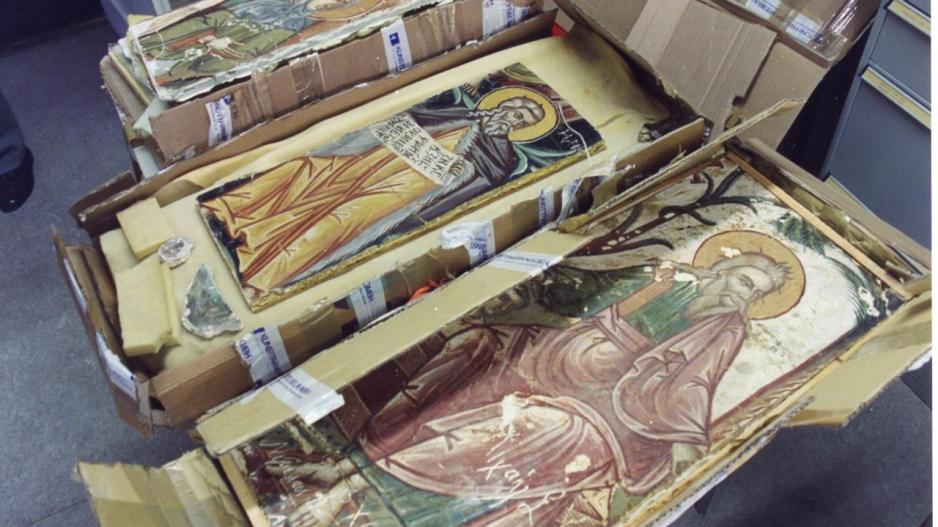
The Ethnological Museum of Berlin eventually returned 23 relics confiscated from Namibia during Germany's colonial era. The Namibian returns were motivated by Germany's historical legacy, while the repatriation of the Benin Bronzes by British colonial forces exemplified universal moral norms.
“These values abhor the idea that people who are already enduring the consequences of war, anarchy, or alien domination, should have their suffering compounded by the loss of precious objects, which reflect their collective identity and spirituality,” Hadjitofi stated. "In the name of those values, I am calling on the German authorities to facilitate the return to Cyprus of all the religious and cultural artefacts that were stolen from our island, (with or without evidence of which Church they originated from), with no financial conditions attached."
But the question remains as to why Bishop Porphyrios of Neapolis went ahead on his own initiative by paying the German authorities for the return of some of Cyprus’ stolen treasures, and what precedence is he setting with his actions. Does this imply that Greece will eventually have to purchase their own Parthenon Marbles from the United Kingdom if they wish to see their return, or that Egypt will have to buy back the iconic Rosetta Stone? Stolen or unlawfully removed antiquities should be returned to their rightful place of origin without financial compensation. Porphyrios' actions could potentially alter the narrative, justifying the act of purchasing stolen art.
And, more importantly, how does this affect cultural activists like Tasoula who have dedicated their lives to repatriating art lawfully, and to counteract criminal activity through financial contributions from donors?
Tasoula Hadjitofi’s Walk of Truth is the long-term extension of her four decades’ work. Her independent, non-governmental organisation aims to counter the ongoing destruction and looting of cultural heritage by engaging the public and to spread awareness of the value of our shared patrimony and the responsibility of each of us to protect it. Among other things, it has set up a digital research facility containing thousands of documents from cases all over the world, including Syria, Iraq, Yemen, Iran, the Balkans, and Cyprus, for use in training, research, and education.
"Nothing would please us more, the people of Cyprus, than to see Germany sending or delivering these antiquities in Cyprus this year without financial expectations in return,” Tasoula said. "This year marks fifty years since the 1974 invasion and Germany could send a clear message of understanding and hope for sustainable peace through the return of our cultural antiquities."
